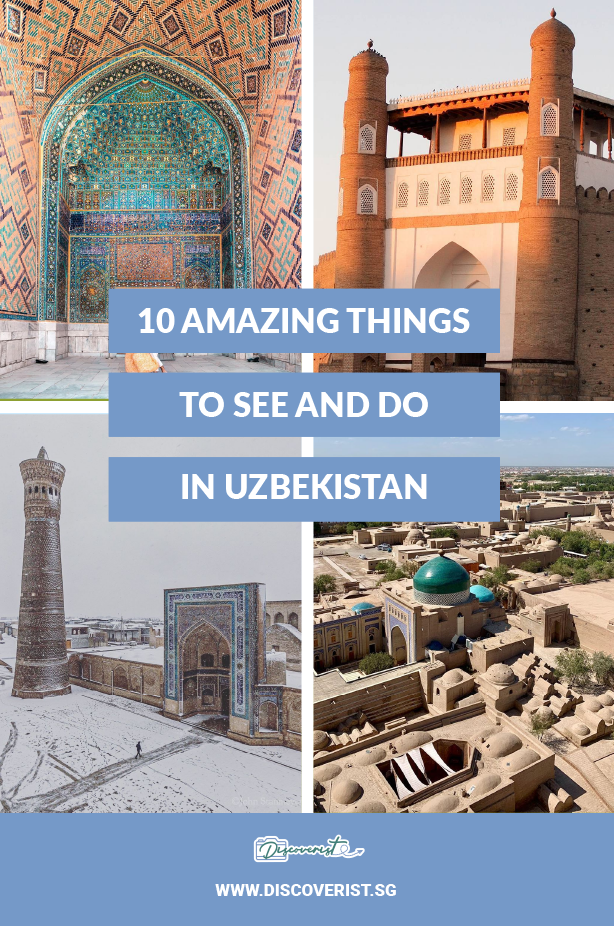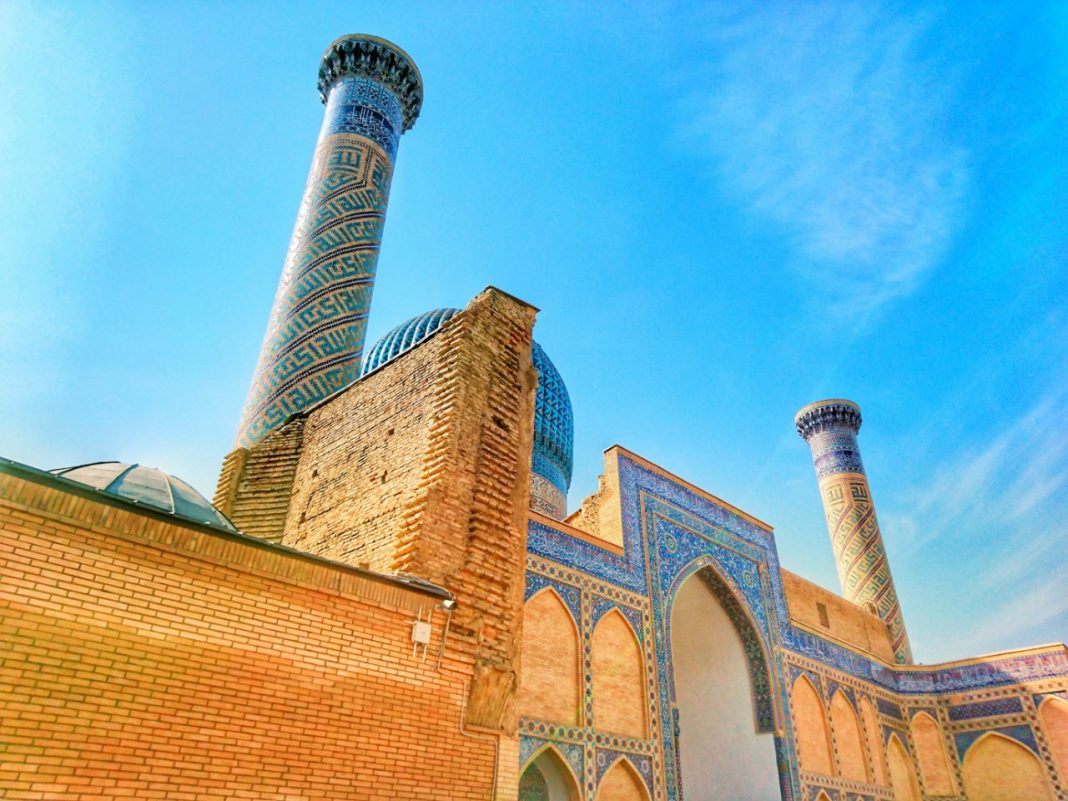Uzbekistan is simply a gem of Central Asia; I wouldn’t necessarily call it undiscovered but it’s certainly one of the least explored travel destinations out there. Whether it’s the lack of direct flights or just a general misperception of the region, it’s a pity that not more people are aware of Uzbekistan, much less heading there for an escapade.
We’ve covered the why and when you should visit Uzbekistan, let us convince you further with some of the best places to visit and things to do in Uzbekistan. As with most guides on Uzbekistan, it’s almost impossible not to anchor your trip around the Silk Road cities of Samarkand, Bukhara, and Khiva along with the capital Tashkent.
Now, don’t get us wrong, there’s certainly a lot more to Uzbekistan outside the three historic pit stops along the ancient Silk Road and Tashkent, but the rich culture and history contained within these cities is too beautiful for us to ignore.
Samarkand
Registan

We start off in what was once the pride and joy of the Silk Road, the evocative city of Samarkand. In that same breath, the Registan is perhaps the most iconic attraction of not just Samarkand, but the whole of Uzbekistan.
Many reigns have passed, and whether you’re talking about Samarkand as the ancient city or its more modern iteration, the Registan is without a doubt the heartbeat of society within Samarkand. The wide, expansive square is framed by three massive Madrasahs (Islamic schools), each with their own distinctive notes of Islamic architecture.
The name Registan, translates to “Sandy Place” in Persian, and that was largely the case during the ancient times when the square was prone to be covered in sand and had a wide range of usage from celebrations to trading, and even executions, depending on the respective rulers’ prerogative.
The Registan complex is beautiful and awe-inspiring, and definitely a can’t-miss while in Samarkand.
Shah-i-Zinda
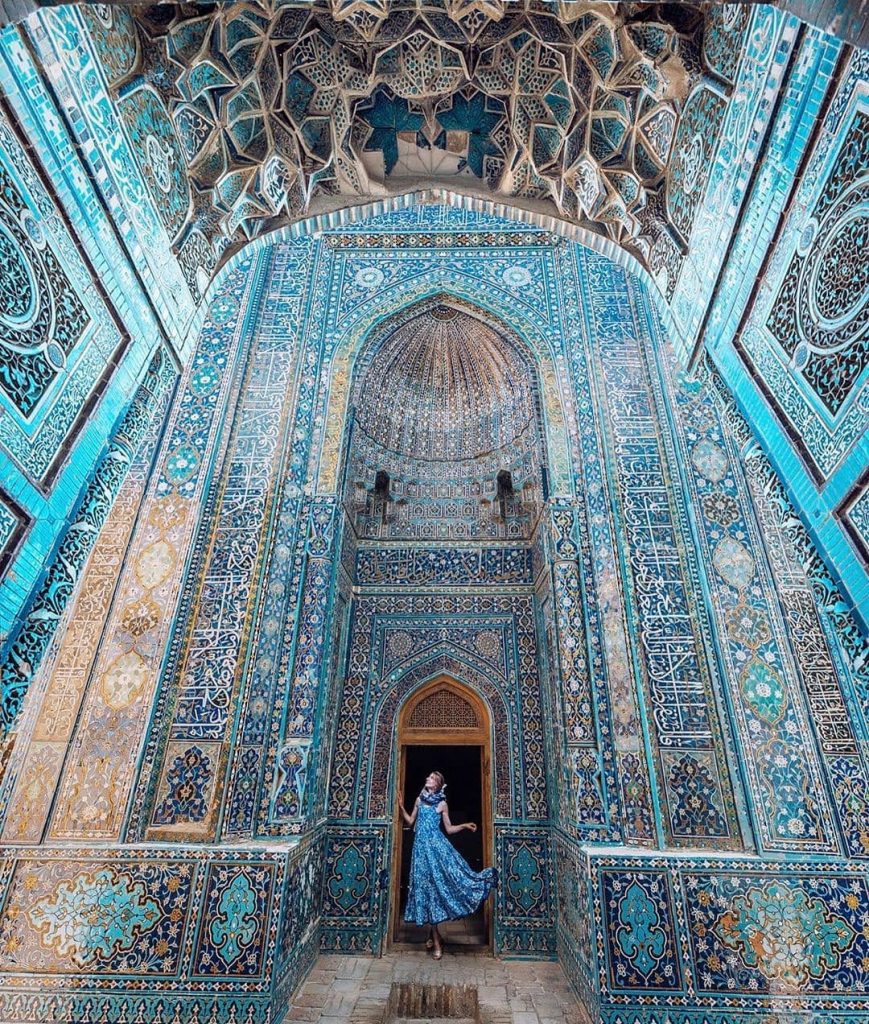
Another monumental architecture of Samarkand, Shah-i-Zinda is an avenue of mausoleums and temples with its first religious monument being built over 1000 years ago. The name translates into “Tomb of The Living King”, originally named for the innermost and holiest of shrines which is a pegged to the legend that Kusam ibn-Abbas, long believed to have been the one to bring Islam to the region during the 7th century, was buried here.
Today, the Shah-i-Zinda complex is an important place of pilgrimage and renowned for its intricate and beautiful Timurid-era tilework. The stunning bright blue hue will mesmerise anyone and it is said that due to the exquisite majolica and terracotta work, almost no restoration work was needed.
It’s of extreme religious significance so do remember to be respectful as you walk the grounds of this magical place.
Bukhara
Ark of Bukhara
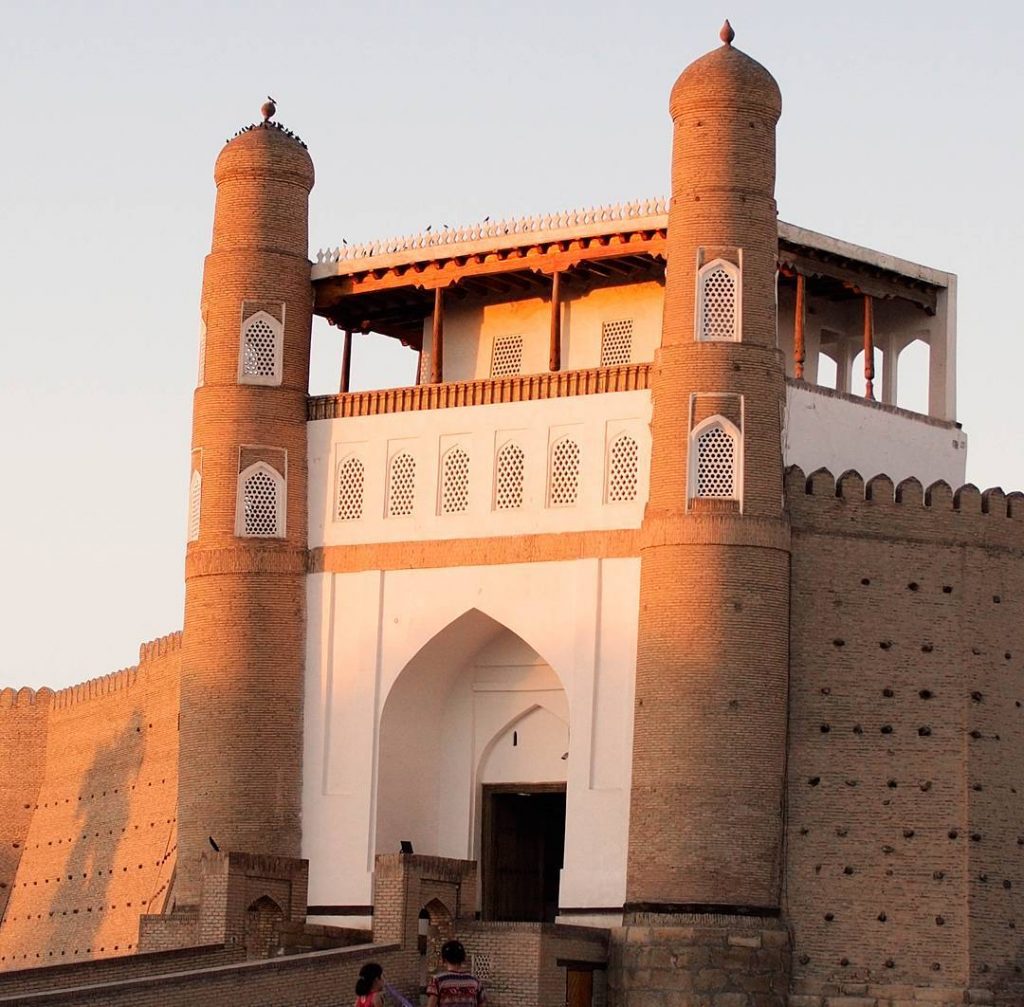
Bukhara is Central Asia’s holiest and religious city, largely untouched with thousands of years of history. Any travel journey to Bukhara will no doubt take you to the Ark of Bukhara, the city’s oldest standing structure, occupied from the 5th century up till 1920 when it was bombed by the Red Army.
Often described as a royal town-within-a-town, the Ark was the home of many emirs (Arab rulers) over the time span. Today, 80% of the Ark are essentially ruins, though the remaining royal quarters have been remodelled to house galleries and museums.
Kalyan Minaret
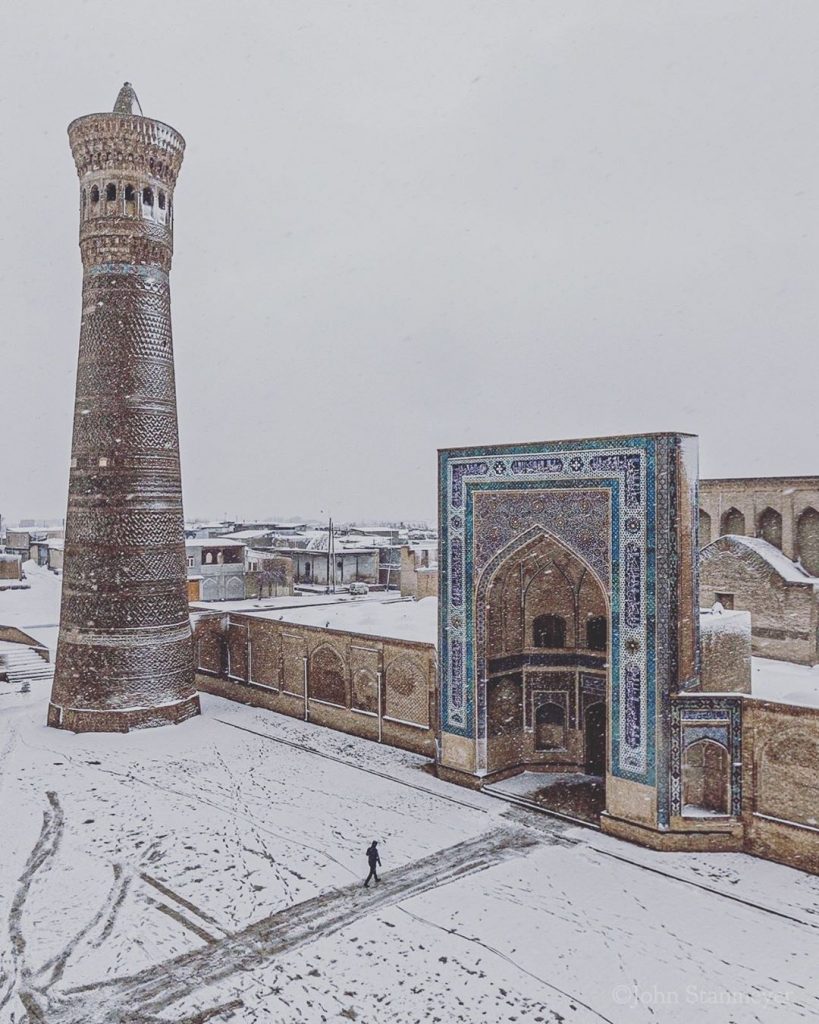
Bukhara is also home to numerous minarets, with the Kalyan Minaret being the most dazzling of all. A tower that looms large over the entire city, it’s nigh impossible to miss the Kalyan Minaret in Bukhara.
Its history is muddied, however, to say the least. Nicknamed the “Tower of Death”, the Kalyan Minaret is most famously known for being the execution grounds where the condemned would be flung from the rotunda at the very top with their end being the stone courtyard below. Interestingly, when Genghis Khan swept through the land, the minaret was the only structure he spared from destruction.
Today, it is a popular tourist attraction and houses the Pol-i-Kalyan Mosque.
Khiva
Itchan Kala

Khiva is truly a historic city, with the Uzbek culture permeating throughout its walls. Khiva’s history, however, was by no means illustrious, often associated with rampant slave trade and barbarism.
Beyond its not so glamourous history is the famed walled inner town of Itchan Kala, which was of supreme importance for those traversing along the Silk Road. Itchan Kala presented the final stop for weary traders and pilgrims to stock up their caravan before braving the vast desert that laid ahead. Boasting 51 monuments and 250 buildings within its fortified walls, its preservation today points to the marvel Muslim architecture of Central Asia.
Though not all of the structures have maintained their integrity, there are several which have, all of which warrants a visit. From the Djuma Mosque to the Pahlavol Mahmoud Mausoleum, and the many bazaars, take the time to explore this time-honoured neighbourhood.
Juma Mosque
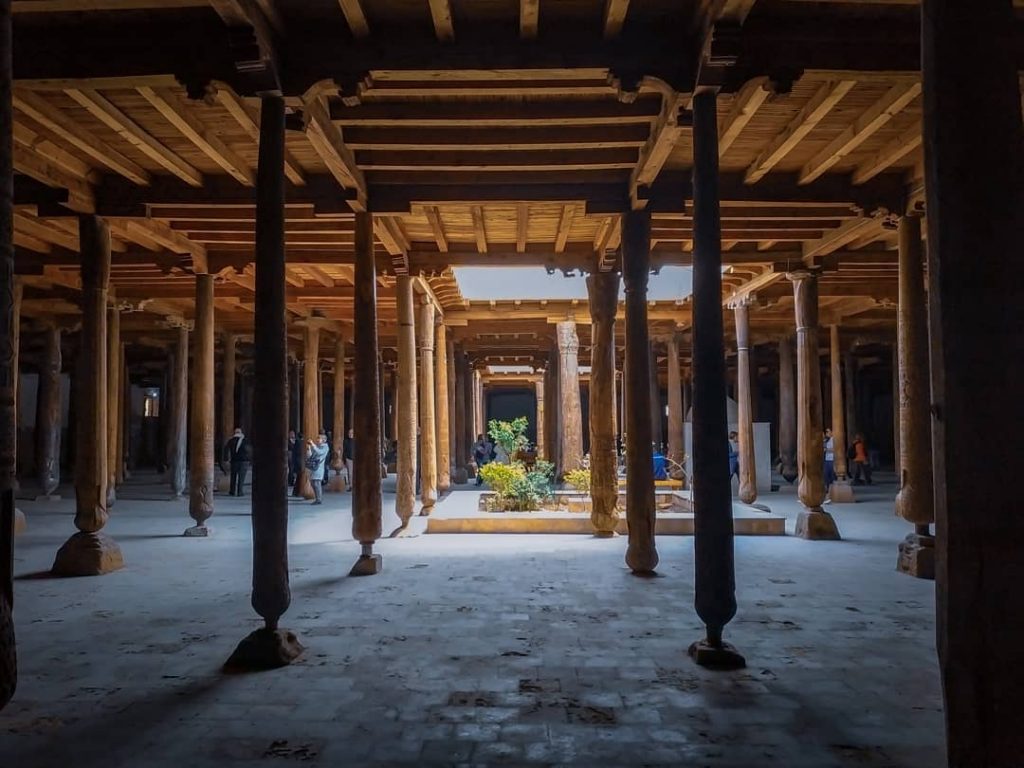
Juma Mosque is located almost directly in the centre of Itchan Kala, so this does seem like a cop out, but it deserves its own point. The heat can get quite intense in Uzbekistan, and the bazaars a tad too boisterous, so if you’re craving some respite from the heat and bustle of Khiva, the Juma Mosque offers the best place for peace and serenity, a sacred space away from the streets.
The atmospheric mosque is famously known for its 218 wooden columns holding up the roof, with some pillars dating back as far as the 10th century. The entire space is enveloped by overwhelming silence and even tour groups are quietly hushed along. Idle awhile and you’ll be sure to find yourself alone in this peaceful haven.
Tashkent
The Chorsu Bazaar

We’ve finally progressed from the old-world Silk Road cities of Uzbekistan and enter the modern-day capital of Tashkent. Tashkent is Central Asia’s main hub, and an unbelievable city that has a continuous push and pull between its rapid modernising efforts and hold on its
Any foray into the city Tashkent will certainly bring you to one of the oldest markets of Uzbekistan – the Chorsu Bazaar. Here you’ll be sure to find anything you need, from local traditional crafts and cheap eats to mountains of colourful spices arranged in rows, all littered throughout under the iconic great dome roof.
Be sure to manage your time well because once you enter, hours will magically go by before you know it.
Chimgan
Image by nastyaa51 via Instagram.
While Uzbekistan is a beautiful place, it can quite often get hot and stuffy with that insufferable heat. Sometimes what you need is to breathe in the cool mountain air, and a trip out to Chimgan is what you need.
A popular skiing spot during the winter months, Chimgan is a mountainous region just an hour or two away from Tashkent. Chimgan isn’t solely for the colder months of the year however, as it’s a prime place for hiking and other adventure-related activities that can prove to be a breath of fresh air away from the cluttered cities of Uzbekistan.
Outside of the Capital and the Three Historic Cities
Aral Sea Ship Graveyard
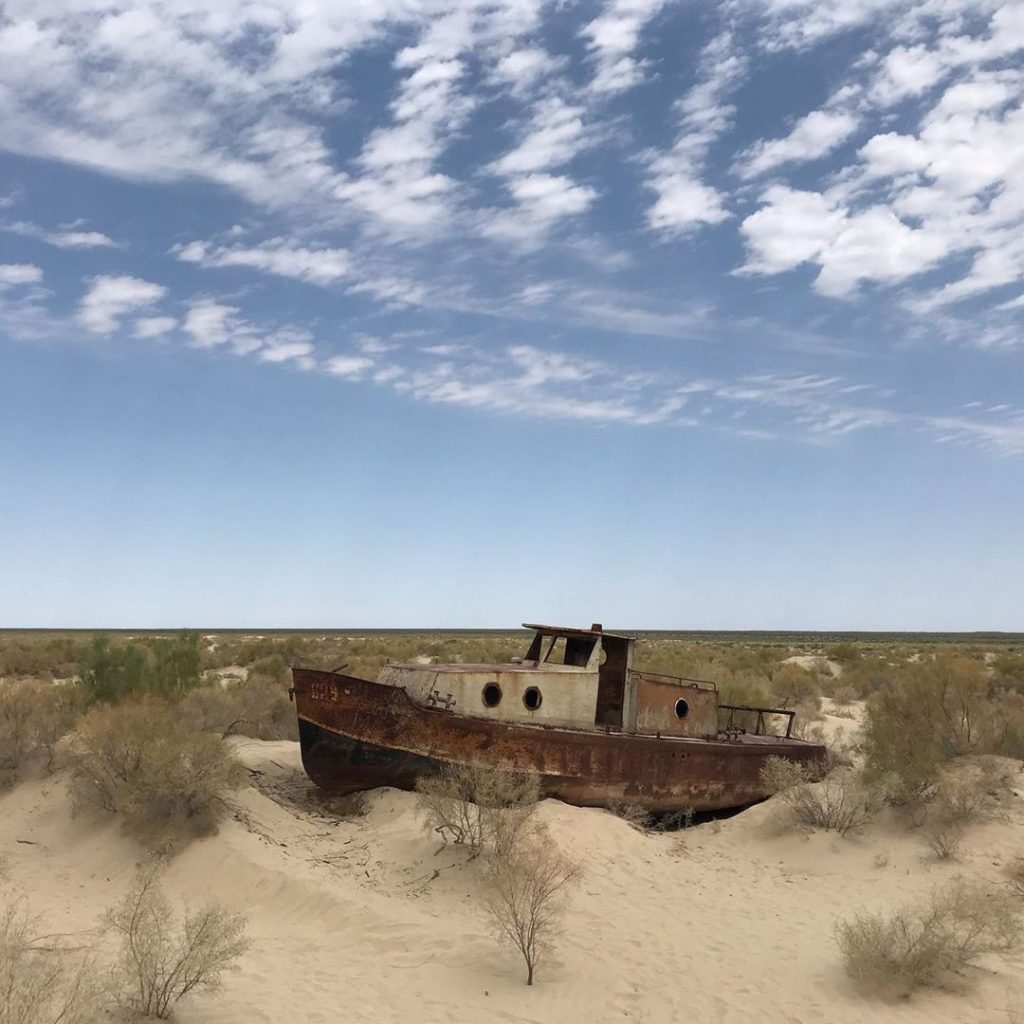
Just outside the city of Khiva lies the town of Muynak, and more famously, the Aral Sea ship graveyard. What was once a busy fishing port, the Aral Sea was the residents of Muynak’s main source of income and livelihood, but that all changed with the Aral Sea decreasing in size and volume.
The sea has dried up, forcing its many residents to relocate, resulting in the town of Muynak being largely deserted. What’s left is a ship cemetery with the ships that once cruised the seas, rusting away in the barren sand. It’s a perfect place to get a photo op and a great way for the country to keep the history of a small town from washing away.
Elliq-Qala
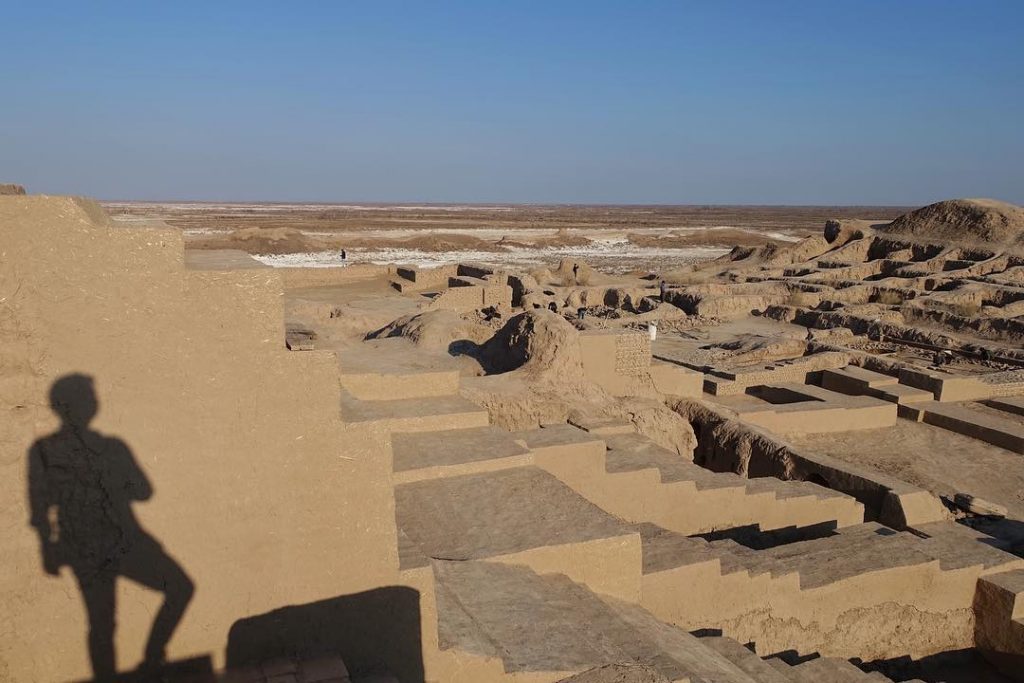
For a truly historic archaeological and anthropological experience, you have to head out to Elliq-Qala, just out of the city of Khiva.
Translating to “Fifty Forts”, Elliq-Qala is a vast area of ruins of countless forts and towns that was once a natural oasis in the desert. Though only 20 or so forts have been found and excavated, many are constantly being unearthed or rediscovered.
The allure of Elliq-Qala is in its potential in revealing the long-lost history of civilisation that once inhabited what many believe to be a bustling hub. If you find yourself having some free time, make your way to these ruins and who knows, you may stumble upon thousands of years of history without even knowing it.
Top photo by Sultonbek Ikromov on Unsplash
➯ Did you like this post? Pin it and share it with others!
